A revolution is underway in the field of behavioral health, uniting architects, interior designers, administrators and end-users with a common goal of prioritizing mental health well-being. This movement is reshaping the very foundations of how we approach and design environments dedicated to mental health, fostering unprecedented collaboration and innovation.
This wave of change goes beyond aesthetics. These spaces require expertise and strict safety measures to prevent injuries, ensuring they function and are secure without incurring unnecessary costs.
In this transformative era, knowledge-sharing is essential.
At Scott Rice Office Works, we’re deeply committed to making a positive difference, actively engaging in behavioral health conversations to expand our expertise and shape the industry’s future. According to Steve Jobe, our Vice President of Healthcare Sales, design plays a crucial role in restoring patients’ humanity.
“By alleviating the burden on individuals already grappling with mental health challenges, we not only benefit them but also help enhance the well-being of our entire community,” Jobe says.
In this blog post, we explore the trends that defy traditional norms and provide a glimpse into a more compassionate and therapeutic future.
Trend #1: Human-Centric Approach
Behavioral health spaces are often associated with cold, clinical environments filled with harsh, bolted-down furniture – a perception that contributes to a treatment problem. Unwelcoming facilities can worsen the self-esteem of individuals seeking help.
The question arises: Why would someone willingly seek assistance in an environment that makes them feel degraded? It’s time to change the design mindset and create more inviting and supportive environments that encourage individuals to seek the help they need.
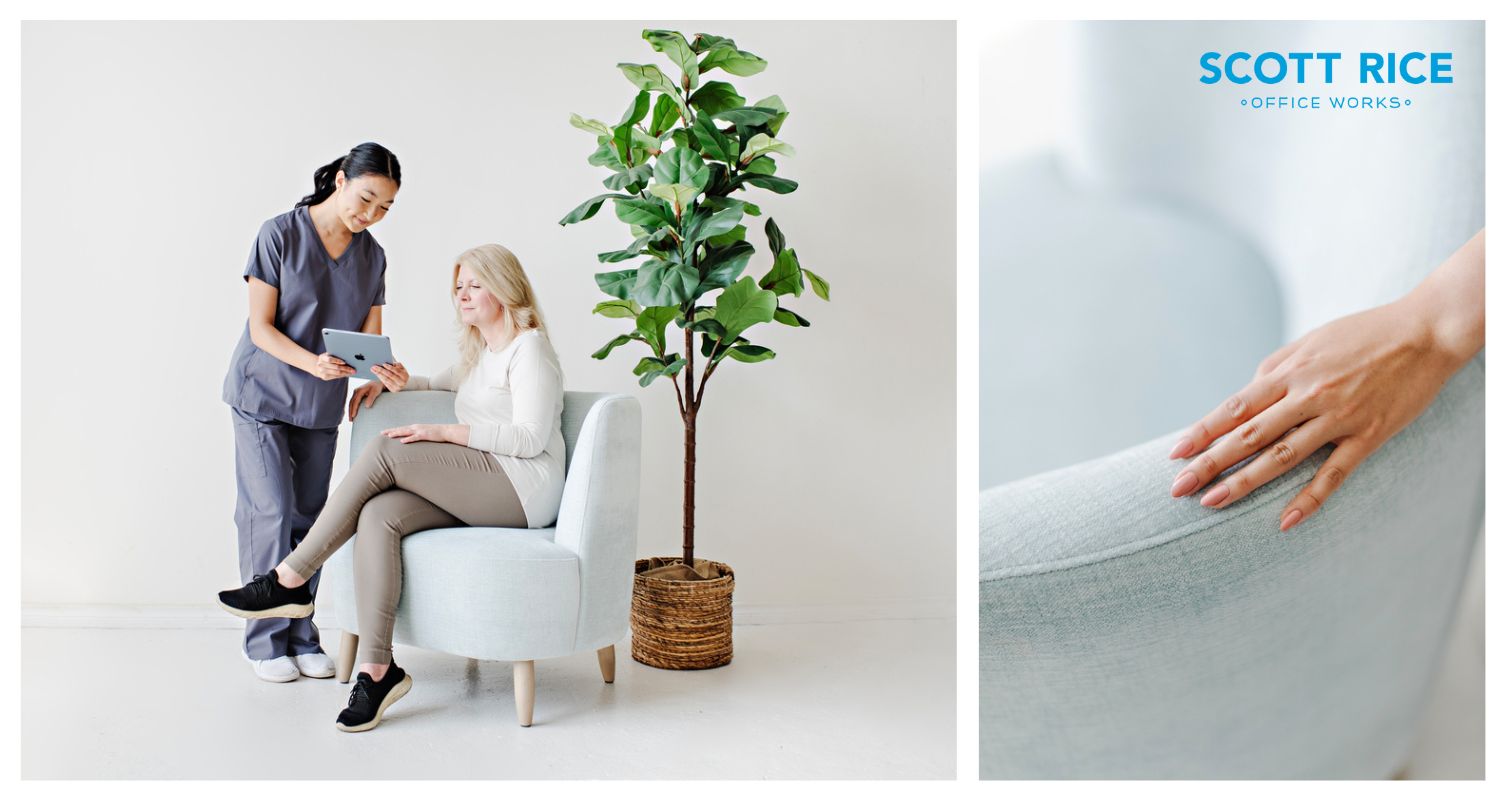
Key areas of focus include:
- Warmth as a Priority: Designers prioritize warmth by utilizing lighting, color and performance fabrics to make spaces feel less institutional and more like sanctuaries of support. Older surfaces, challenging to clean properly and prone to damage over time, are being supplemented with durable alternatives. The goal is to transition toward a more humane and residential feel in healthcare spaces using materials that ensure safety and cleanliness without compromising comfort.
- Significance of Softness: Softness plays a vital role in promoting tranquility. Designers incorporate soft materials and textures, such as wood alternatives, to create a relaxing ambiance that fosters calmness and healing. The challenge lies in making furniture non-institutional while still preventing self-harm and harm to others. Innovations like rotationally molded and weighted furniture help address these concerns.
- Crucial Role of the Built Environment: The built environment is a key contributor to well-being. Mental health spaces are designed not merely as neutral backdrops but as active contributors to stress reduction, mood improvement and overall well-being. The choice of materials for the built environment becomes essential for ensuring safety while creating positive experiences.
The Expert’s Take
Seth Starner, Advanced Explorations and Commercialization Leader – Vertical Markets for Steelcase, emphasizes that we frequently underestimate the influence of the built environment on temperament, be it in workplaces, behavioral health spaces or hospitals. Striking the right balance means considering durability while simultaneously prioritizing safety and well-being.
“If you’ve ever moved from a windowless room to one with windows, you understand that your environment matters. It has the potential to greatly influence your mood and attitude,” Starner says. “The built environment possesses the power to make things better or make things worse; it’s not just neutral.”
“Even small changes, such as incorporating natural views and a softer, warmer atmosphere, can benefit everyone, not just patients, but family members and staff all benefit from making the space more human and less institutional. In the end it’s about creating psychological safety as well as physical safety,” he goes on to say.
Trend #2: Custom Furniture for Different Needs
Unlike the standardized approach commonly seen in general healthcare design, behavioral health design adheres to universal principles emphasizing inclusivity and adaptability over rigid categorization.
The shift towards customized furniture is revolutionizing the way we design spaces for mental health, tailoring solutions to meet the unique requirements of different age groups. Whether catering to kids, adults in crisis or seniors, each demographic needs furniture specifically designed specifically for their needs.
In spaces designed for children, the focus is on lively and playful designs. This includes colorful lounge furniture that encourages therapeutic conversations and enhances overall well-being.
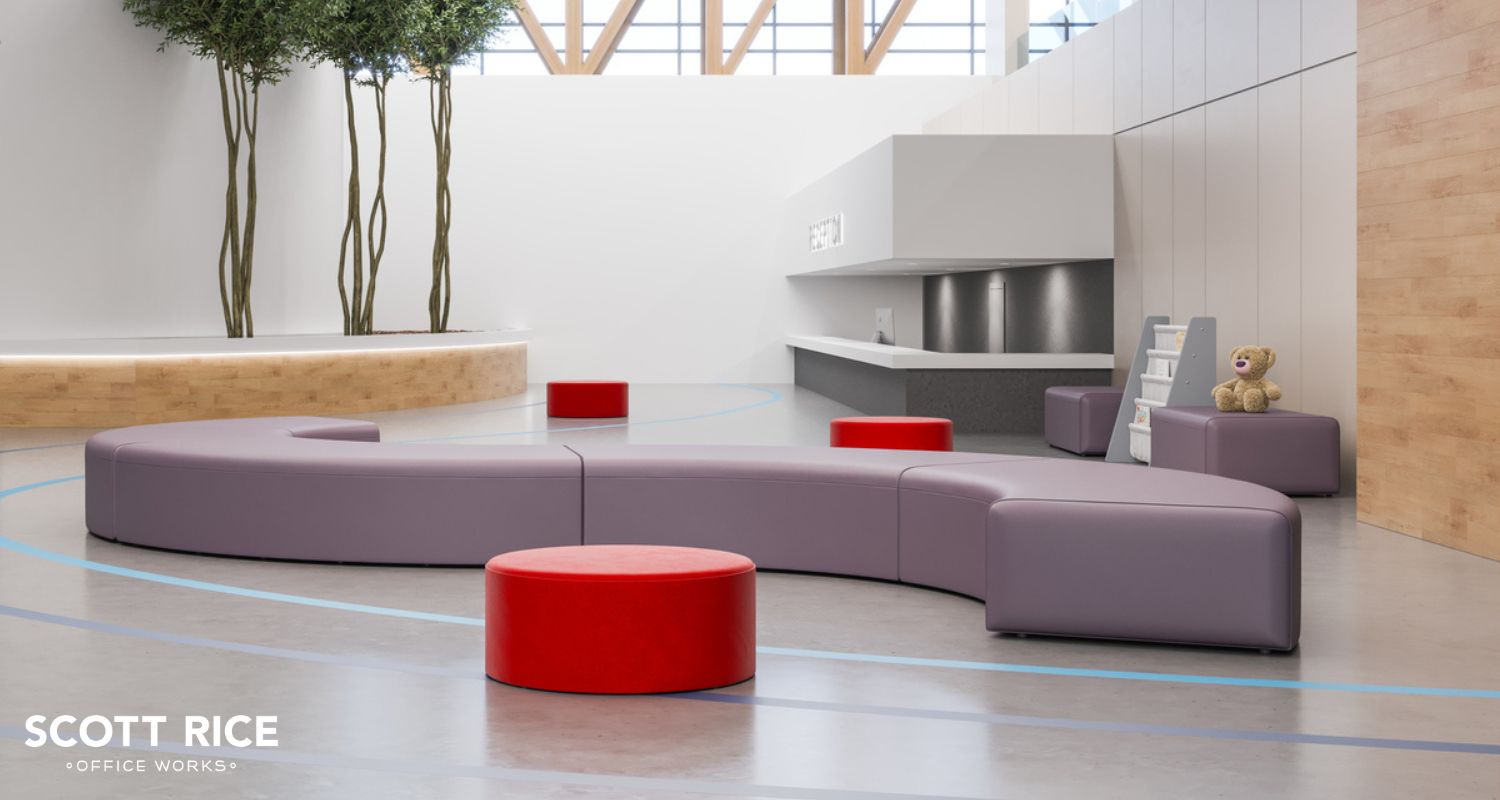
In contrast, adult crisis centers opt for calm and simple designs with neutral colors to support the recovery process. For seniors, the priority is on furniture that addresses mobility concerns, facilitating comfortable movement within the space.
Inclusive Design
Recognizing diverse needs, there are shared factors to consider. Spaces designed for collaboration accommodate a range of activities and age groups. The central area is adaptable, striking a balance between openness and quietness, while versatile furniture emphasizes functionality.
Through collaboration, ongoing learning and consideration of factors like neurodiversity and sensory overload, we can create better-designed spaces that meet the needs of everyone involved.
Innovations in inclusive design include:
- Adjustable Positions: Beds, chairs and tables can now be changed to fit different needs. This means more comfort for patients with various postures during therapy.
- Soothing Textures: Forget sterile healthcare looks; now, furniture comes with soft fabrics, ergonomic contours and sensory elements. These designs create a peaceful atmosphere and make the space feel warm and healing.
- Smart Stability: Smart materials like plates filled with sand or metal and strong plastic shapes make furniture more stable in these places.
- Durable Design: Tough materials found in roto molding make furniture last longer and enable it to withstand bumps in healthcare spaces. Weighted bean bags offer a unique sensory experience through gentle pressure, promoting relaxation during treatment.
The Expert’s Take
Suzanne Phillips Fawley, CHID Behavioral Health Interior Design Consultant representing Stance Healthcare, asserts that every aspect of a space should be carefully considered. This includes understanding users’ needs, their interactions with furniture and materials and the facilities’ overall purpose.
“It is all dependent on the application. You could have a high-end, hotel-like addiction recovery center that is a mile down the road from a center for adolescent treatment– totally different applications, requiring specific furniture selections, color palette, textures & finishes, overall design, and type and theme of artwork.
“They may be just down the road but designed individually based on information gathered from an initial programming team consisting of C-Suite, treatment providers, facilities team members, architects and interior designers” she says.
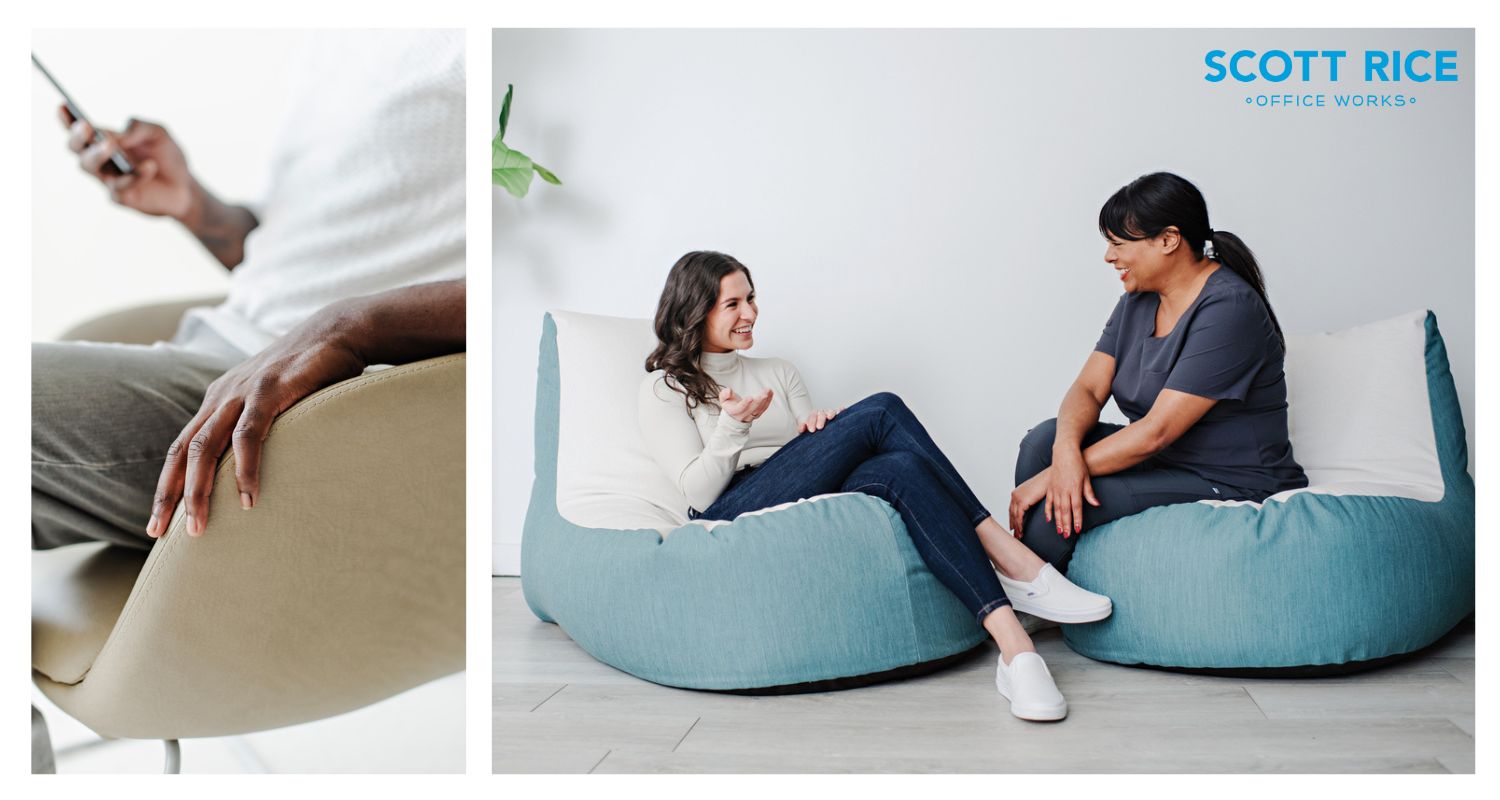
The thoughtful design of a space not only affects its atmosphere but can also influence people’s behavior within it. Factors like lighting, color scheme and pattern all play a critical role.
Fawley continues, “If a setting is thoughtfully designed, meaning appropriate for whatever segment you’re designing for, people in most cases respond favorably. Investing in warm, aesthetically pleasing and comfortable furnishings while designing a new space, can create an environment where individuals feel nurtured and more apt to consider and positively respond to treatment.”
Trend #3: Symbiosis of Safety and Comfort
Prioritizing safety is crucial; however, the industry is realizing that solely focusing on physical safety can come at the expense of psychological safety. While a room with no furniture and minimal amenities may be the safest option from a physical standpoint, it can create an environment that feels like a prison cell, negatively impacting psychological well-being. To address this challenge, designers must carefully consider the built environment and furniture choices.
Safety First
Designing furniture for behavioral health spaces is a complex task that demands durable materials capable of withstanding actions like kicking, jumping, tearing and graffiti. Upholstered pieces often require innovative solutions to keep people safe and prevent hiding forbidden items. The objective is to craft safe environments that don’t feel institutionalized.
Considerations for such design include:
- Durability: Even with new design advancements, ModuForm’s rotational molded lounge seating from the 1970s remains popular due to its durability and resistance to movement. Unlike regular furniture in behavioral health settings that often requires frequent replacement, these tough foam-filled designs have endured for over 45 years.
- Materials: Selecting the right materials is crucial because certain fabrics can pose risks. Individuals dealing with anxiety might repeat certain movements, known as “picking,” which can easily damage vinyl-coated fabrics and create points for self-harm.
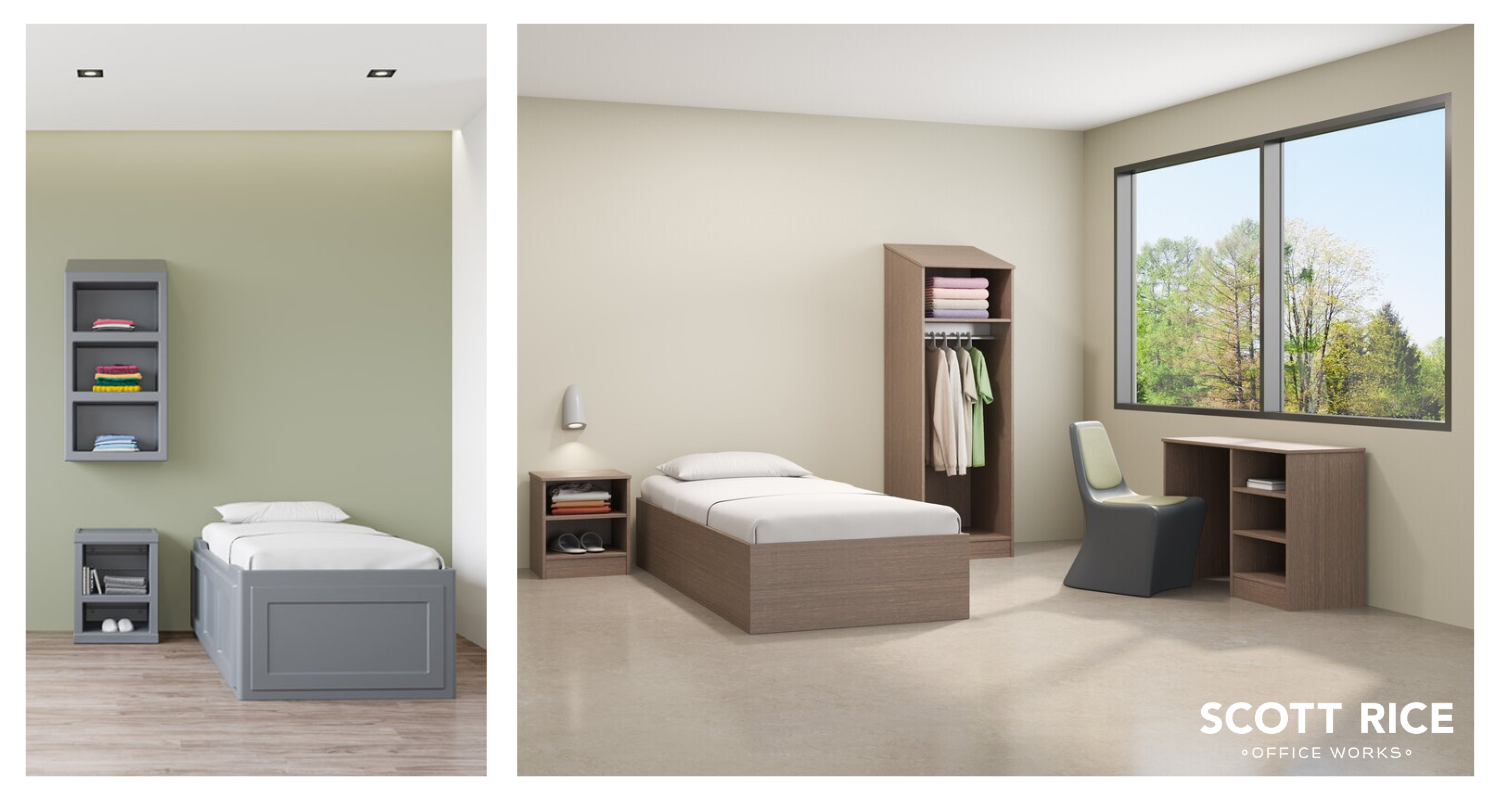
Staff Safety
Ensuring staff safety in behavioral health settings involves creating furniture that is both difficult to move and durable, with features like armrests and weighted chairs to prevent harm. Striking a crucial balance between staff safety, comfort and functionality is essential.
In acknowledging the challenges and potential risks confronted by staff in these unpredictable environments, it’s imperative to initiate conversations with informed insiders. This collaborative approach ensures tailored solutions that address specific facility needs, taking into account factors such as patient demographics, acuity levels, concerns related to self-harm, sanitization and incontinence.
Comfort in Choice
Empowering individuals with small choices within the confines of safety restores a sense of autonomy. This may involve seating options that accommodate multiple postures or giving individuals control over lighting. These subtle elements help individuals feel a sense of control over their environment and contribute to a calming effect.
To establish a soothing environment, consider the following four aspects:
- Fidget-Friendly Furniture: This incorporates engaging elements to accommodate fidgeting, providing outlets for restless energy and reducing anxiety. Features like textured surfaces or motion may redirect excess energy constructively, promoting a calming effect.
- Calming Artwork and Natural Scenes: Choosing appropriate artwork that promotes tranquility, such as natural scenes, contributes to the overall ambiance.
- Natural Views: Access to natural scenes not only provides visual appeal but also taps into the therapeutic effects of nature. The presence of greenery and natural elements fosters a peaceful atmosphere, contributing to a positive and comforting environment.
- Color Choices: Thoughtful consideration of hues, such as soft blues, greens or muted earth tones, can evoke a sense of tranquility and promote a peaceful ambiance.
The Expert’s Take
Joshua Weissman, President and Owner of ModuForm, highlights the significance of instilling a sense of security and choice in facilities. He draws a parallel to the anxiety one might experience when losing a seat in a dining hall, emphasizing that individuals dealing with anxiety in mental health facilities should not face added stress over losing their designated space.
The focus lies in creating an environment where such concerns are mitigated, enabling individuals to concentrate on their well-being without unnecessary anxiety about seating arrangements.
Weissman explains, “In a lot of these facilities, you lose all your choices and control, and the staff has limited options too. They don’t want to take seating away from patients, so you’ve got to find something that works for both. It’s really about giving people choices – from how patients sit to the furniture in the place. The aim is to set up a balanced environment.”
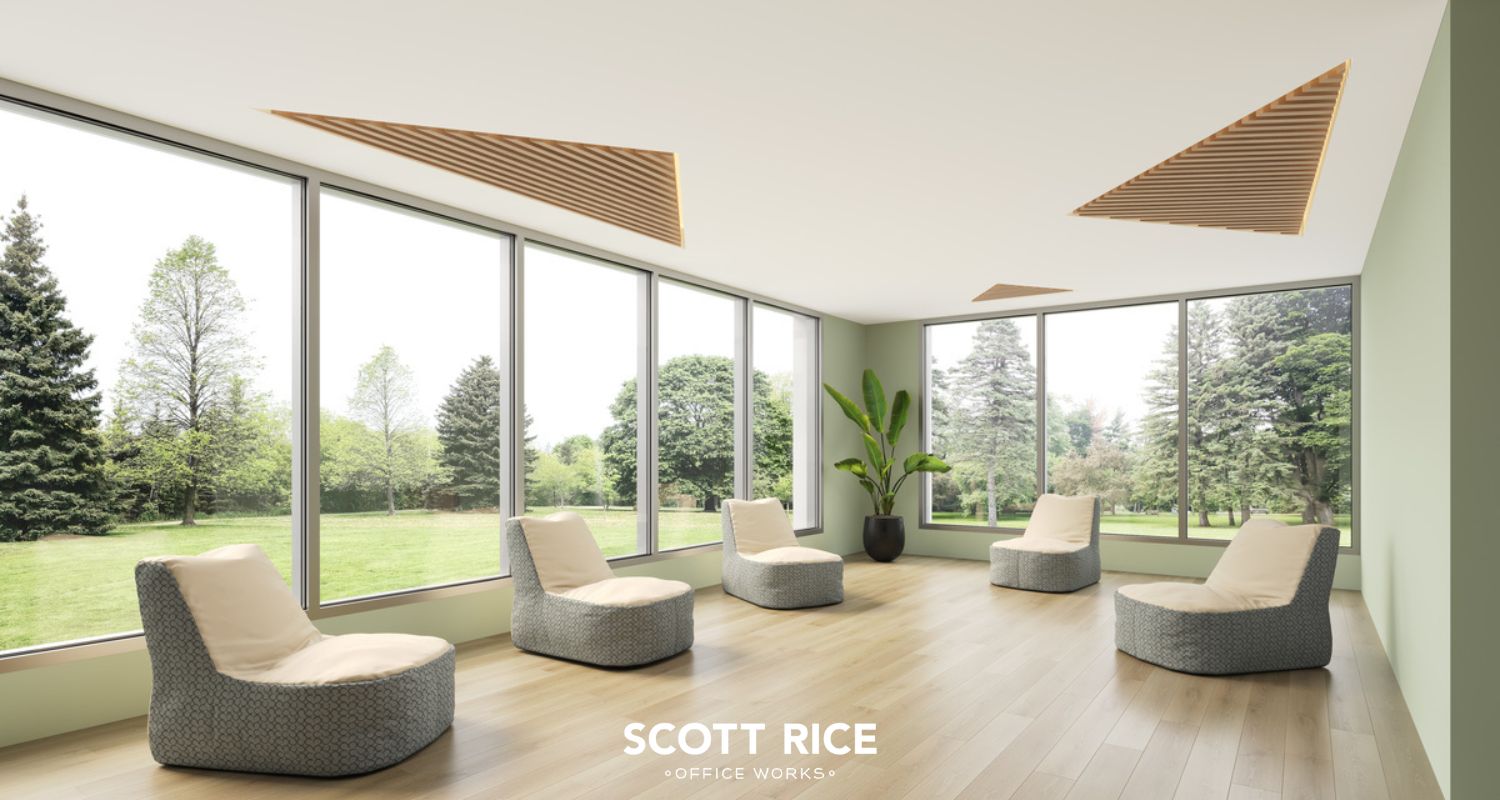
Trend #4: Nature Integration
We all find comfort in nature; it’s why we love mountain or beach getaways, seeking a sense of peace and relaxation. Creating therapeutic environments by integrating nature through biophilic interior design is a proven strategy to enhance psychological safety and reduce restlessness, minimizing the need for restraints or medication.
Here are some practical ways to bring nature’s calming touch into behavioral health spaces:
- Earthy Elements: Infuse a serene atmosphere into indoor spaces by incorporating nature-inspired textures and earthy tones.
- Colors from the Environment: Harmonize design by observing colors in the surrounding natural setting and applying them to walls, furniture and decor.
- Relaxing Art: Promote a tranquil ambiance with artwork featuring soothing colors and organic shapes, avoiding sharp and abstract elements.
- Harnessing Sunlight: Maximize natural light through strategically placed windows, choosing calming paint colors and furnishings inspired by nature.
Outdoor Spaces in Behavioral Health Design
The importance of outdoor spaces varies based on factors like patient well-being and facility functionality. Considerations such as cost, maintenance and patient safety influence the design, especially in regions where preventing patient elopement requires thoughtful planning. Balancing budgetary constraints, maintenance needs and security considerations is essential to create therapeutic and safe outdoor environments.
The Expert’s Take
Jacquelyn Rakoski-Diediker, Senior Project Manager at Architect One, emphasizes the role of nature in architectural design and its positive impact on mental health. She advocates for incorporating colors that evoke outdoor settings and ensuring ample outdoor space that feels open. The goal is to enhance well-being within the building through the influence of nature.
“Nature typically grounds people, not just through sunlight but also in subtle ways, like the colors we use,” she explains. “Even the shades we choose can gently remind you of the outdoors without actually pushing you into the outdoors. These details significantly influence your experience, whether you’re aware of it or not.”
Trend #5: Healing Color Palettes
The conventional institutional color scheme, often associated with sterility and grays, has evolved into a focus on creating soothing environments that prioritize patient comfort. To create a soothing atmosphere, manufacturers have introduced unconventional colors like lavender.
By challenging traditional norms and incorporating these unique hues, they seek to address industry-wide feedback and considerations regarding perceived aggression.
However, it’s important to understand color psychology when designing healthcare spaces. Bright colors in some areas may work well for pediatric areas but should be used with caution for adults and elderly populations. Nature-inspired soft patterns have emerged as an effective way to contribute to a welcoming and practical environment.
Overall, embracing unconventional colors and considering the impact of different hues on individuals is key to creating aesthetically pleasing and healing-focused healthcare spaces.
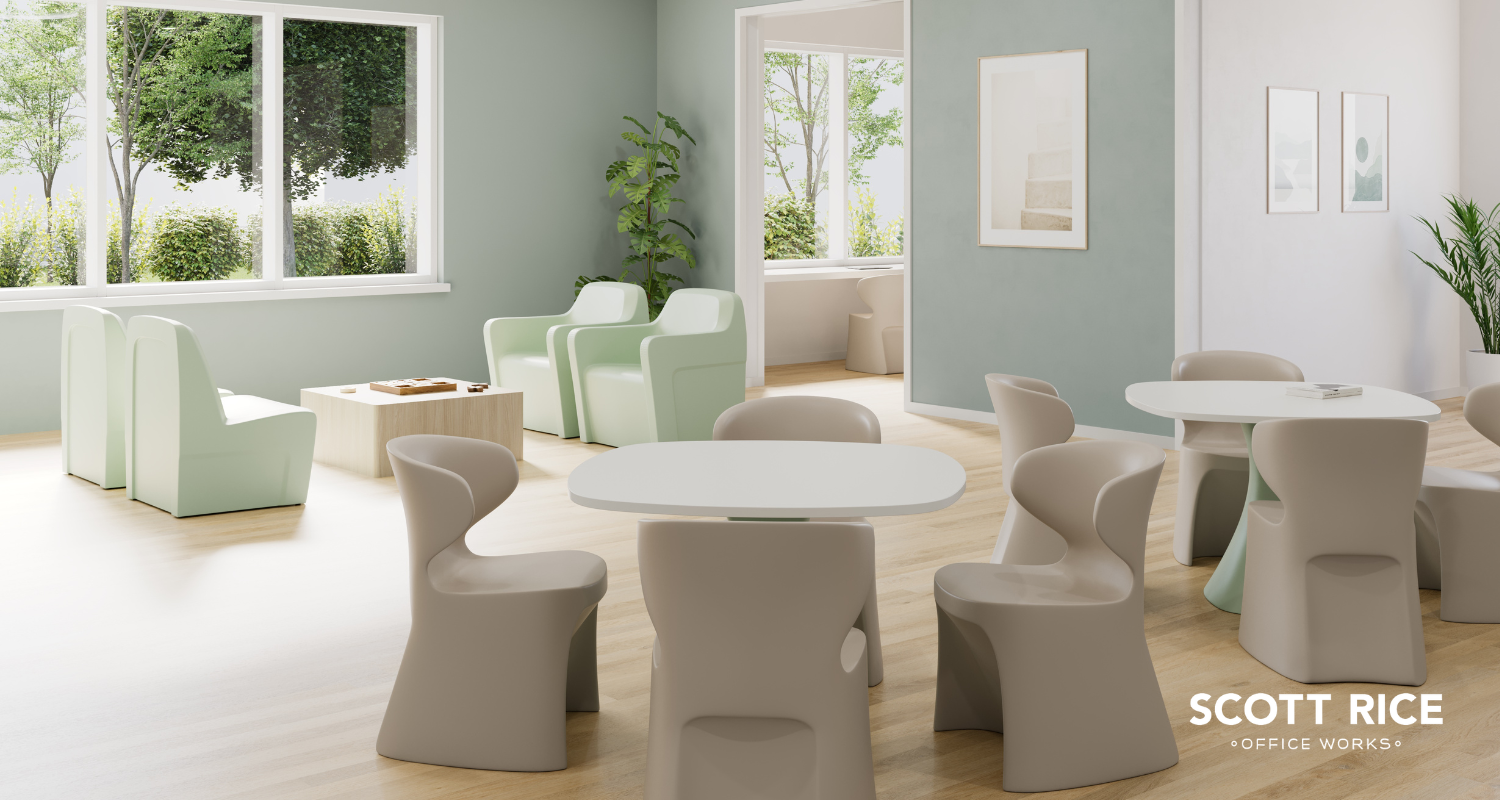
The Expert’s Take
Kristin Horst, Healthcare Consultant at Scott Rice Office Works, emphasizes that incorporating sensory elements such as colors and textures can create a soothing environment.
“Manufacturers are keeping up with the times, trying out unique colors and adjusting based on what people like. They’re aiming for spaces that feel cozy and inviting, putting patients’ well-being first. And it’s not just about looks – they’re also making sure the design is safe and suits the needs of behavioral health. It’s all about creating spaces that work for the people using them,” Horst says.
Forge a Compassionate Future with Scott Rice Office Works
At Scott Rice, we’re committed to transforming behavioral health spaces for the better, challenging antiquated perspectives for a positive impact on well-being. Architects, manufacturers and designers are driving this shift, and we take pride in actively contributing to ongoing progress through collaborative efforts. Together, let’s lead the charge in the design revolution of behavioral health centers, fostering collaboration and addressing challenges.
Upcoming Behavioral Health Symposium
Join us at our upcoming symposium to explore these trends and witness our dedication to advancing the field of behavioral and mental health. Feel free to reach out and connect with us to engage in meaningful dialogue as we work together to shape a behavioral health design future grounded in compassion. We encourage your input and conversation.

